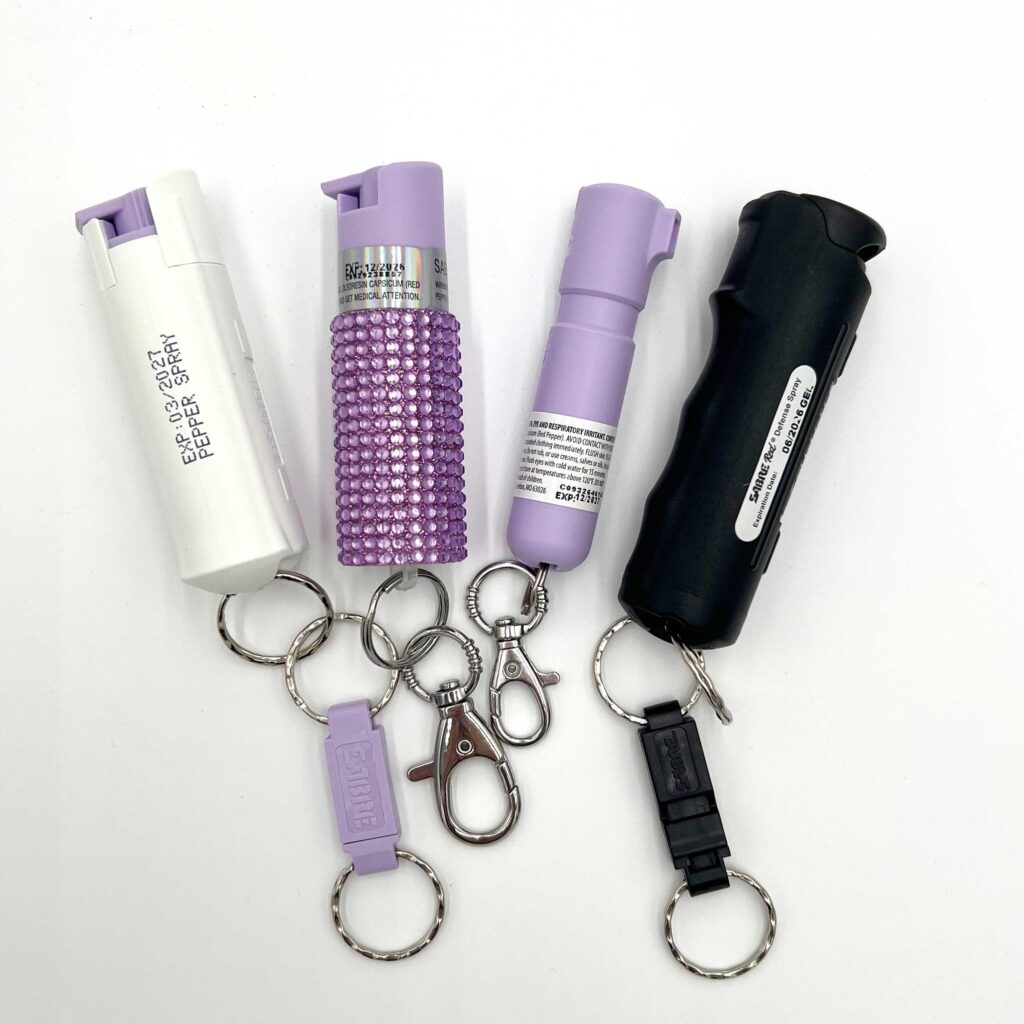Table of Contents
- Understanding the Factors That Affect Pepper Spray Shelf Life
- Proper Storage Conditions to Maximize Pepper Spray Longevity
- Routine Maintenance and Inspection for Reliable Performance
- Best Practices for Safe Handling and Expiry Management
- Concluding Remarks
Understanding the Factors That Affect Pepper Spray Shelf Life
Several critical elements influence how long your pepper spray remains effective. Temperature fluctuations, exposure to sunlight, and humidity levels directly impact the chemical stability inside the canister. High temperatures can cause the propellant to degrade faster, reducing pressure and spray range, while extreme cold may thicken the formula, hindering its discharge. Additionally, repeated exposure to direct sunlight can break down the active compounds, diminishing the potency you rely on for self-defense.
Beyond environmental factors, storage practices play a pivotal role in maintaining your pepper spray’s functionality. For instance, storing the device in a cool, dry place away from direct UV exposure will help preserve its contents. Avoid keeping it in a car glove box or near heat-emitting electronics. Moreover, regular physical inspection for damage or corrosion ensures the canister’s integrity remains intact. Consider these preservation tactics:
- Store pepper spray at room temperature, ideally between 68°F and 77°F (20°C to 25°C).
- Keep the canister sealed tightly and upright to prevent leaks and pressure loss.
- Rotate your supply by checking expiration dates and replacing units on time.
- Avoid exposing your pepper spray to fluctuating temperatures or moist environments.
Proper Storage Conditions to Maximize Pepper Spray Longevity
Storing your pepper spray correctly is crucial to maintain its effectiveness over time. Ensure it is kept in a cool, dry place, away from excessive heat or direct sunlight which can degrade the active ingredients and pressurization. Ideally, the temperature should remain consistent and not exceed 120°F (49°C) to prevent the canister from rupturing or losing potency. Avoid locations such as glove compartments, car dashboards, or near heating vents where temperature fluctuations are common.
Additionally, consider these storage tips for optimal longevity:
- Store upright: Keeping the canister standing reduces the risk of leaks and ensures even distribution of the spray.
- Keep it accessible: While secure, the spray should be stored in a place where you can quickly reach it during an emergency.
- Protect from moisture: Humidity can corrode the can’s outer shell and degrade the spray formula.
By following these guidelines, you can confidently rely on your pepper spray when it matters most, knowing it has retained its maximum shelf life and strength.
Routine Maintenance and Inspection for Reliable Performance
Ensuring your pepper spray functions correctly when you need it most starts with consistent upkeep. Regularly inspect the canister for any signs of damage such as dents, rust, or corrosion, which can compromise its effectiveness. Check the nozzle to ensure it is clear of debris and test the spray mechanism occasionally by performing a short test spray in a safe, well-ventilated area, if recommended by the manufacturer. Keeping an eye on the expiration date is crucial; pepper spray loses potency over time, so timely replacement can be the difference between safety and vulnerability.
Develop a simple routine maintenance checklist to make these inspections effortless and systematic. Some key points to include are:
- Visual checks for physical integrity
- Function tests of the spray mechanism
- Storage condition reviews to avoid exposure to extreme temperatures
- Expiration date tracking in your personal safety inventory
By integrating these steps into your routine, you guarantee that your pepper spray will remain ready and reliable, providing peace of mind and protection whenever needed.
Best Practices for Safe Handling and Expiry Management
To ensure your pepper spray remains effective and safe, proper handling is crucial. Always store it in a cool, dry place away from direct sunlight or extreme temperatures, which can degrade the formula and reduce its potency. Avoid keeping it in places like your car’s glove compartment during summer or near heating vents. Additionally, regularly inspect the canister for any signs of damage, rust, or leakage-disposal of compromised units is essential to avoid malfunctions or accidental discharge.
Managing its expiry is just as important. Pepper sprays typically have a shelf life ranging from 2 to 4 years, depending on the brand. Mark the purchase date clearly and set reminders to replace your spray before the expiration date. Once expired, the spray may no longer be reliable, putting your safety at risk. Consider the following:
- Check the manufacturer’s expiration date printed on the bottle.
- Test the spray periodically in a safe environment to ensure proper discharge.
- Dispose of expired or damaged units at designated hazardous waste collection points.
Concluding Remarks
Extending the shelf life of your pepper spray isn’t just about saving money-it’s about ensuring that when you need it most, your self-defense tool will perform reliably. By storing it properly, avoiding exposure to extreme temperatures, and regularly checking the expiration date, you can keep your pepper spray effective and ready for use. Remember, maintaining your pepper spray is a small but crucial step in your overall personal safety strategy. Stay prepared, stay safe!Check Our Other Blogs
- StunGun – Your Trusted Source for Stun Guns, Laws, and Self-Defense Tips
- PepperSprayLaws – Your Trusted Resource for Pepper Spray Information
- StunGunLaws – Your Trusted Guide to Stun Gun Legality and Safety




